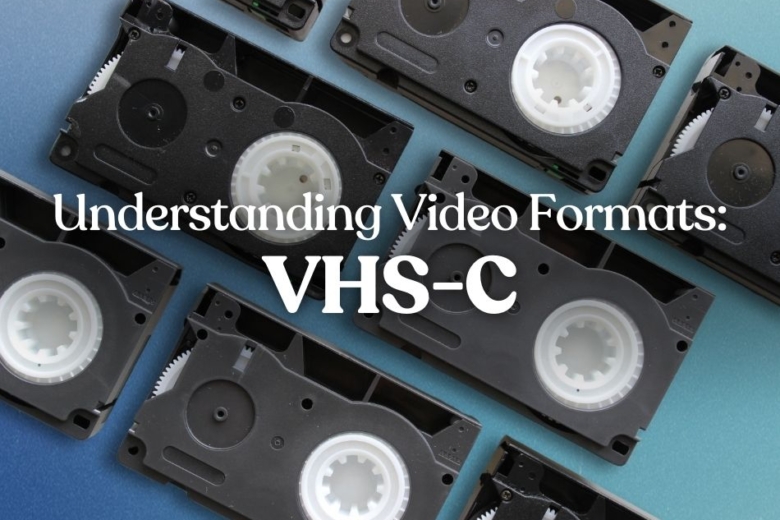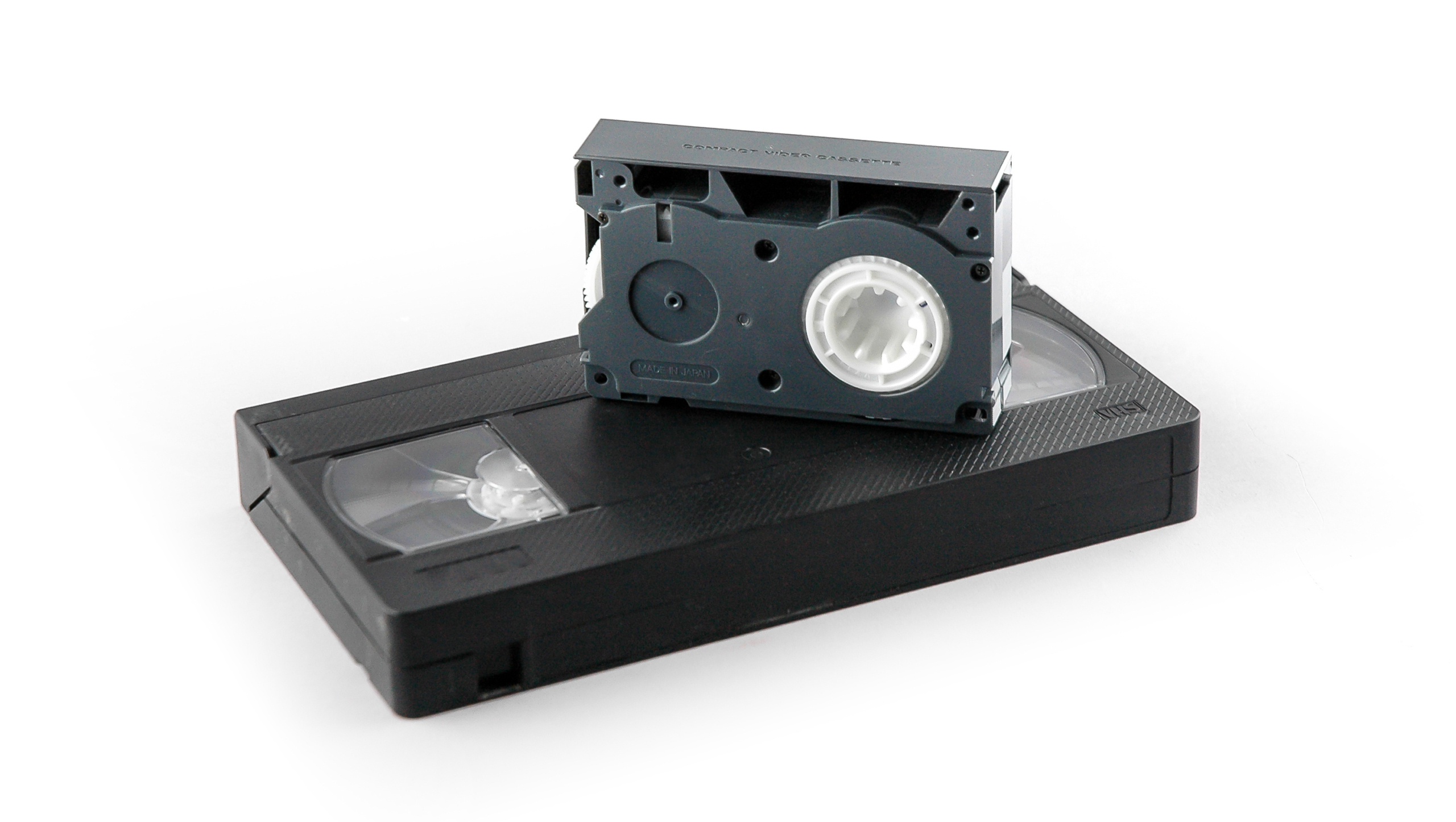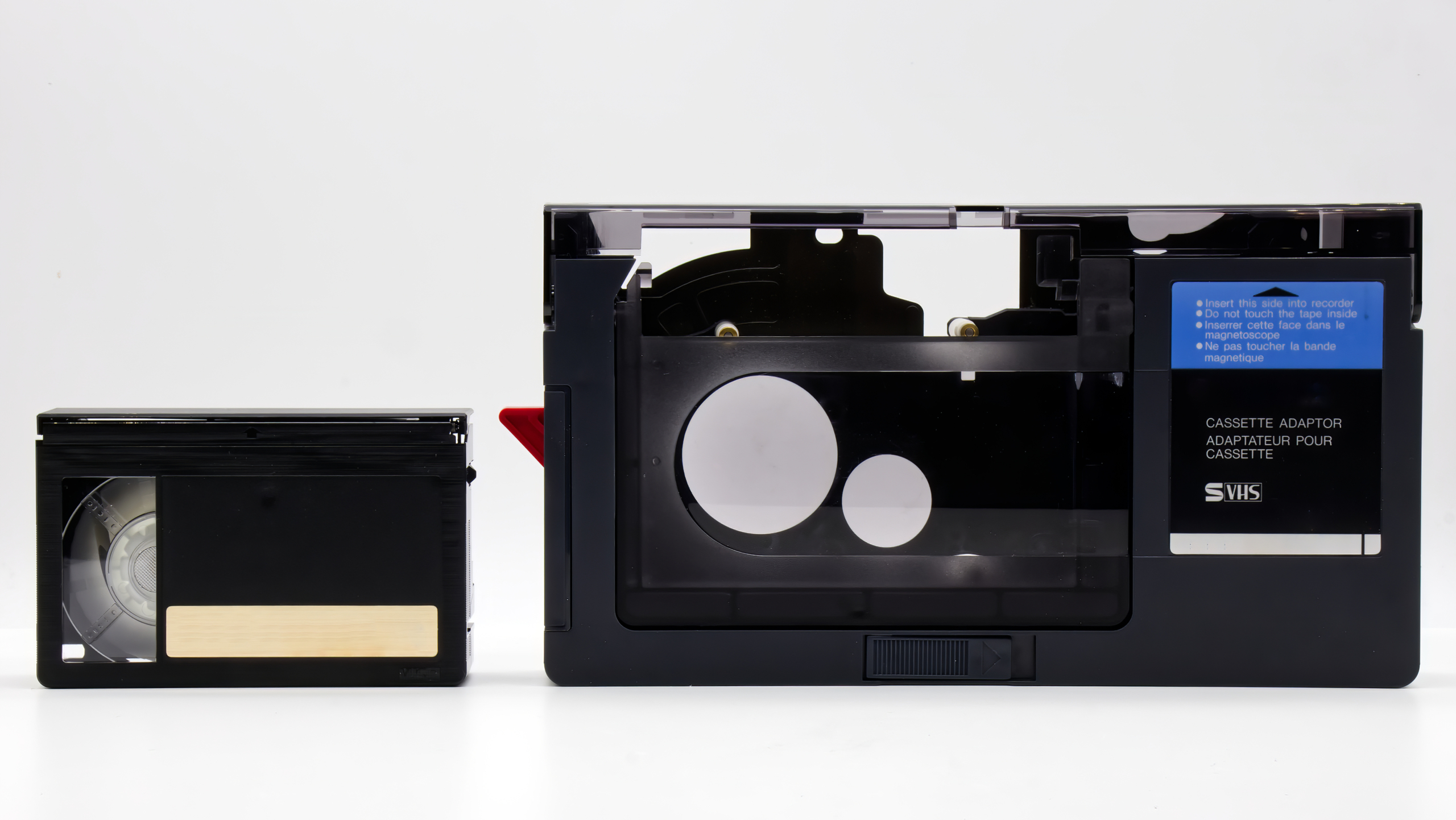Everyone knows what a VHS tape is but during the heyday of analog recording, there were all sorts of competing products on the market. One competitor was a smaller, more compact version of the VHS tape called the VHS-C tape.
In this post, we look at what VHS-C tapes are, how they compare to other products of the time, and how long you can expect your old VHS-C to last.
WHAT IS A VHS-C TAPE?
VHS-C tapes are smaller versions of VHS tapes released in 1982 by JVC (Japan Victor Company), which was owned by Panasonic at the time. The company was famous for producing some of the first televisions in Japan and, of course, the original VHS tapes.
While VHS-C enjoyed a short time as the compact king, the release of Video8 in 1984 meant JVC needed to keep improving its VHS-C product to stay on top. That’s how the higher-quality S-VHS-C tape came about in 1987.
Both VHS-C and Video8, along with many other analog products, lost their popularity in 1995 when the first digital camcorder came on the market. As time went on, more and more companies discontinued the tapes until the last company still making them, Funai, finally stopped in 2016.
IS A VHS-C THE SAME AS A VHS?
The “C” in VHS-C stands for “compact,” and it really is just a compact version of the original. It was developed by the same company and used the same magnetic tape.
The original VHS tape was around seven inches by four inches in size and one inch thick but the VHS-C measured just 3.5 inches by 2.25 inches and was just 0.75 inches thick.
You could even use normal VHS systems to play VHS-C tapes. You just needed an adapter — a normal-sized VHS that the VHS-C tape was inserted into. The main draw of the VHS-C compared to the original was how much smaller the camcorders were.
However, it was mostly hobbyists and people who had a particular interest in camcorders that upgraded. The original VHS had become a household staple and many people didn’t feel the need to keep up with the latest products and upgrades.
IS VHS-C THE SAME AS VIDEO8?
VHS-C and Video8 are two different types of analog video tapes. Video8 tapes first came on the market in 1984, two years after VHS-C tapes. The two products were roughly the same size but Video8 tapes were slightly higher quality and had a run time of 60 minutes compared to VHS-C’s 30 minutes.
Despite this, VHS-C had a huge advantage in the consumer market because they could be played on a standard VCR — and everyone already had one of those.
HOW DO YOU WATCH VHS-C TAPES?
VHS-C tapes can be played in the same VCR machines that play VHS tapes. This meant that people could use the same machine to watch movies bought on VHS tapes and to play the home movies they filmed on VHS-C camcorders. The only thing people needed to buy was an adapter to help the VHS-C tapes fit into the VCR.
If you want to watch VHS-C tapes now, you can still buy the adapters at electronic stores, along with a VCR if you don’t already have one. You can also play the tapes on your TV using a VHS-C camcorder. These aren’t a common item anymore but if you own VHS-C tapes, you may still own the camcorder too. You’ll need to check what cables you need to connect the camcorder to your TV, but it could be as simple as a HDMI-to-HDMI connection.
If you want to view and share your old videos more easily, you should also consider digitizing them. Once you have the files on a hard drive or USB, you can play your videos on any device. You can also share them with family and friends without dealing with obsolete hardware.
HOW LONG ARE VHS-C TAPES?
VHS-C tapes have a much shorter run time than a lot of other formats. A standard VHS tape, for example, can record 120 minutes of footage, while a VHS-C tape can only record 30 minutes in most cases.
WHEN WAS VHS-C DISCONTINUED?
While VHS-C started falling out of use in the 1990s, various companies continued to produce the tapes for a further 20 years or so. After all, with hobbyists still using their VCRs and camcorders, there was still some demand. Eventually, the final company still producing the tapes, Funai, discontinued VHS-C in 2016.
HOW LONG DO VHS-C TAPES LAST?
The longevity of VHS-C tapes largely depends on how well they’ve been stored and cared for. However, a common problem that affects them is tape slackening. This occurs when the magnetic tape unspools inside the cassette and the loose tape becomes damaged.
Some later models of the tapes have a mechanism to prevent this from happening, but the earlier models do not. Even without tape slackening, VHS-C tapes won’t last forever. If you want to preserve the content on your tapes, digitizing them is the best course of action.
If you enjoy the retro hardware, you can keep using your tapes — digitizing just ensures the videos aren’t lost when your tapes eventually stop working.
HOW TO CONVERT VHS-C TO DIGITAL
At EverPresent, we can digitize your VHS-C tapes, making sure each one is cleaned, exercised, and properly handled during the process. From just a few tapes to huge collections, we’d love to hear about any projects you’d like help with. Reach out to us here to learn more and get a quote.



